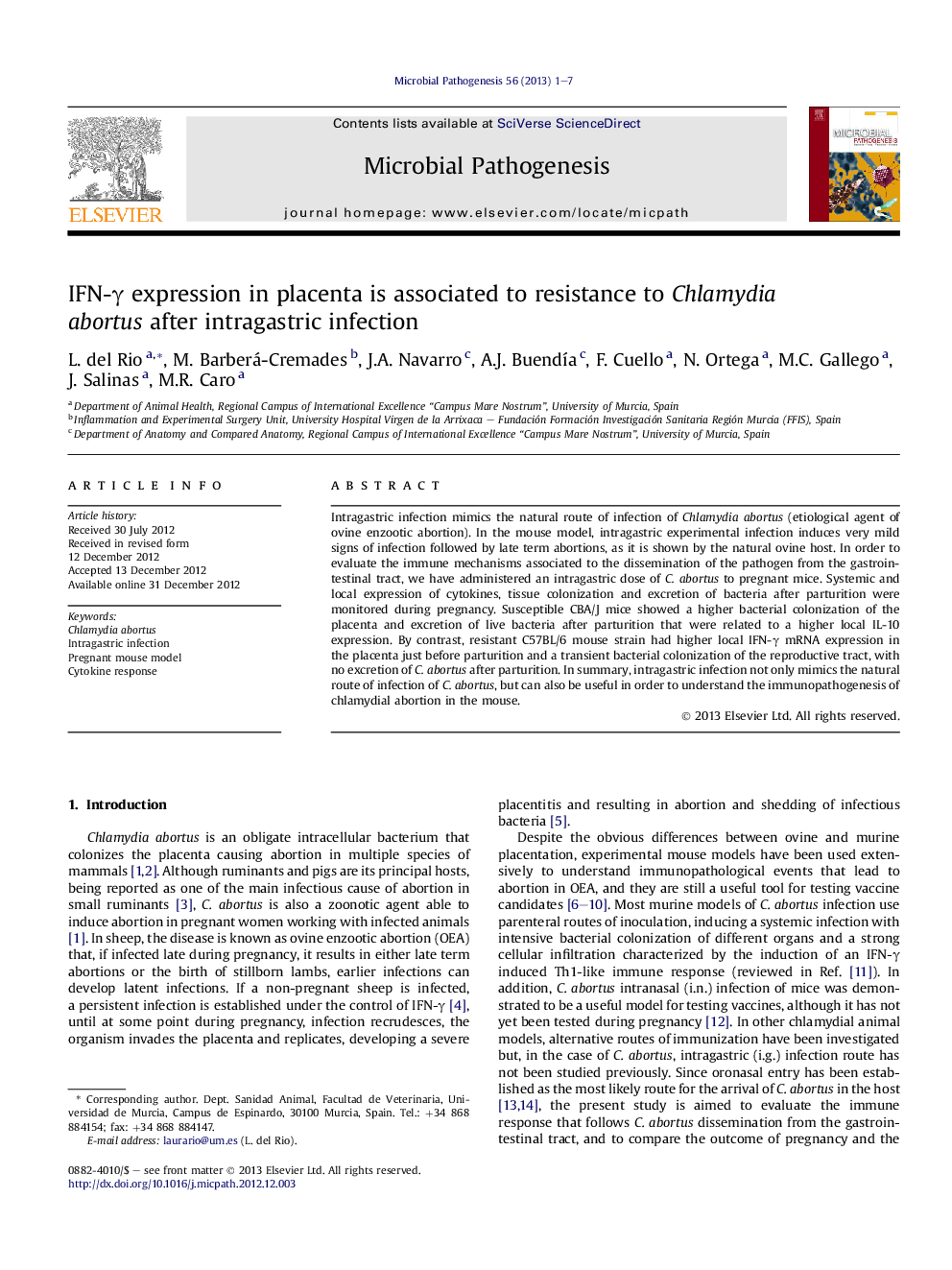| Article ID | Journal | Published Year | Pages | File Type |
|---|---|---|---|---|
| 3416732 | Microbial Pathogenesis | 2013 | 7 Pages |
Intragastric infection mimics the natural route of infection of Chlamydia abortus (etiological agent of ovine enzootic abortion). In the mouse model, intragastric experimental infection induces very mild signs of infection followed by late term abortions, as it is shown by the natural ovine host. In order to evaluate the immune mechanisms associated to the dissemination of the pathogen from the gastrointestinal tract, we have administered an intragastric dose of C. abortus to pregnant mice. Systemic and local expression of cytokines, tissue colonization and excretion of bacteria after parturition were monitored during pregnancy. Susceptible CBA/J mice showed a higher bacterial colonization of the placenta and excretion of live bacteria after parturition that were related to a higher local IL-10 expression. By contrast, resistant C57BL/6 mouse strain had higher local IFN-γ mRNA expression in the placenta just before parturition and a transient bacterial colonization of the reproductive tract, with no excretion of C. abortus after parturition. In summary, intragastric infection not only mimics the natural route of infection of C. abortus, but can also be useful in order to understand the immunopathogenesis of chlamydial abortion in the mouse.
► We studied an intragastric infection model of Chlamydia abortus. ► We evaluated the immune response in pregnant mice. ► High local IFN-γ mRNA in placenta was related to resistance. ► Susceptible mice showed higher levels of IL-10 and bacterial colonization.
